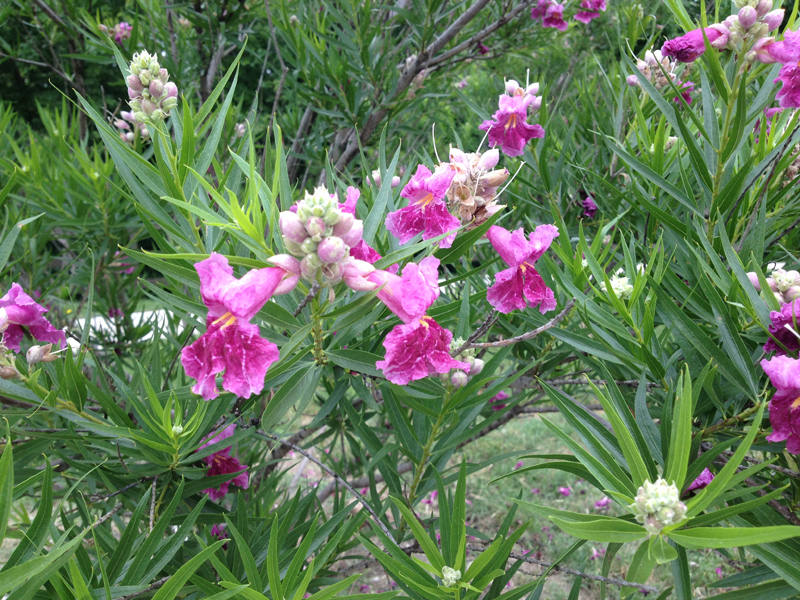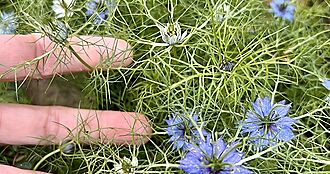Desert Willow
Desert Willow, Chilopsis
One of Texas’ best native trees for ornamental use, these drought tolerant beauties will steal the show in any urban garden or natural landscape setting. They also attract hummingbirds, butterflies and moths.

Growing
A full sun location and well-drained soil are both a must for desert willow. Do not plant in areas with excess or regular irrigation. In regions that receive more than 30-inches of rainfall, amend soil and raise the grade to provide better drainage. During its first year, water weekly, then reduce water as plants establish. Plants are deciduous but offer an interesting architectural form in the winter months.
Tips
Its compact size makes desert willow an excellent candidate for small gardens and urban landscapes. Plants can be left to grow as a multi-trunked shrub, or pruned into a tree-form. Plants bloom on new wood to regular selective hand pruning to remove spent growth will encourage more flowers.
Recommended
C. linearis a relative of trumpet vine and esparanza, this small deciduous tree blooms heavily summer through fall. There are a number of varieties and cultivars available of this Texas native. ‘Bubba’, ‘Dark Storm’ and ‘White Storm’ are popular and excellent performers.
Features: Willow leaf shaped foliage with masses of trumpet-shaped fragrant blooms summer through fall. Long narrow seed pods. Flowers appear in varying shades of white, pink, rose, violet and lavender.
Height: 15 ft. to 20 ft.
Spread: 15 ft. to 20 ft.
Hardiness: zones 7-10


